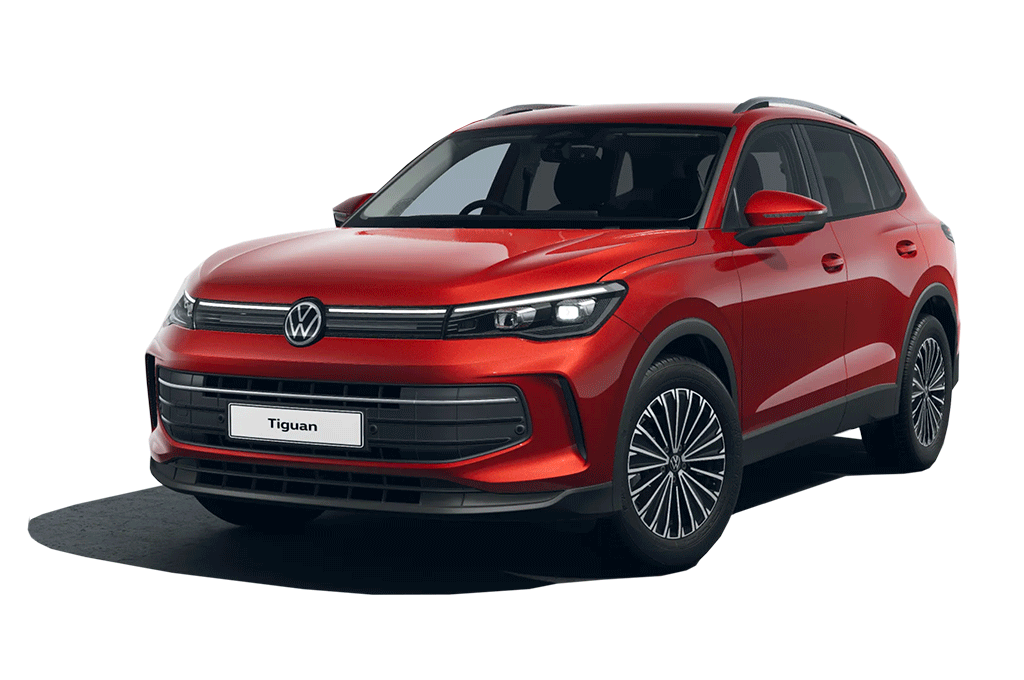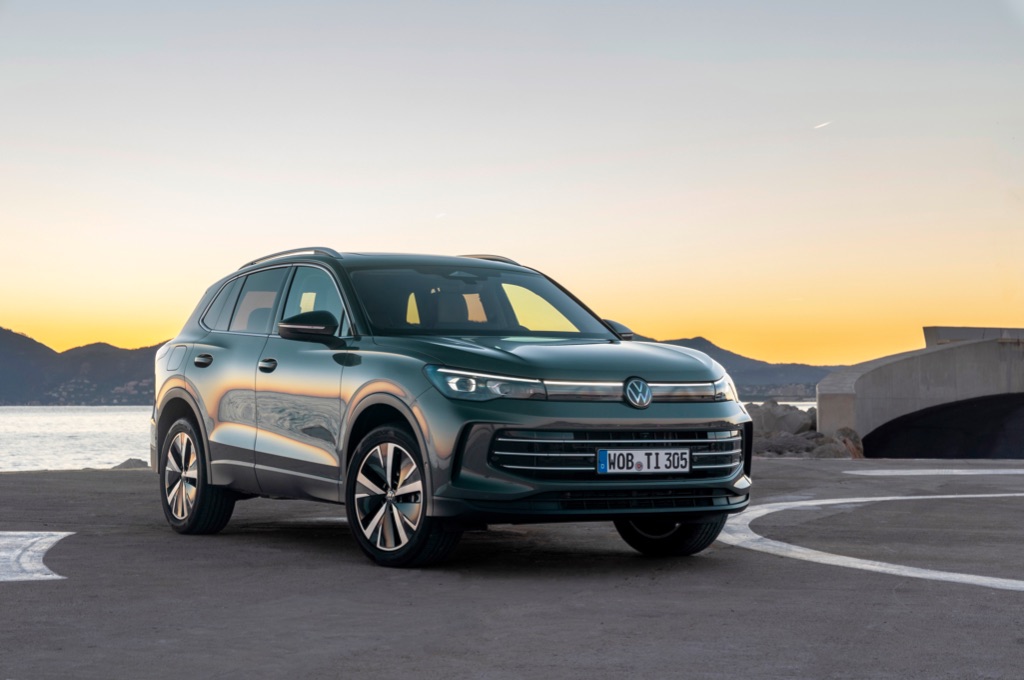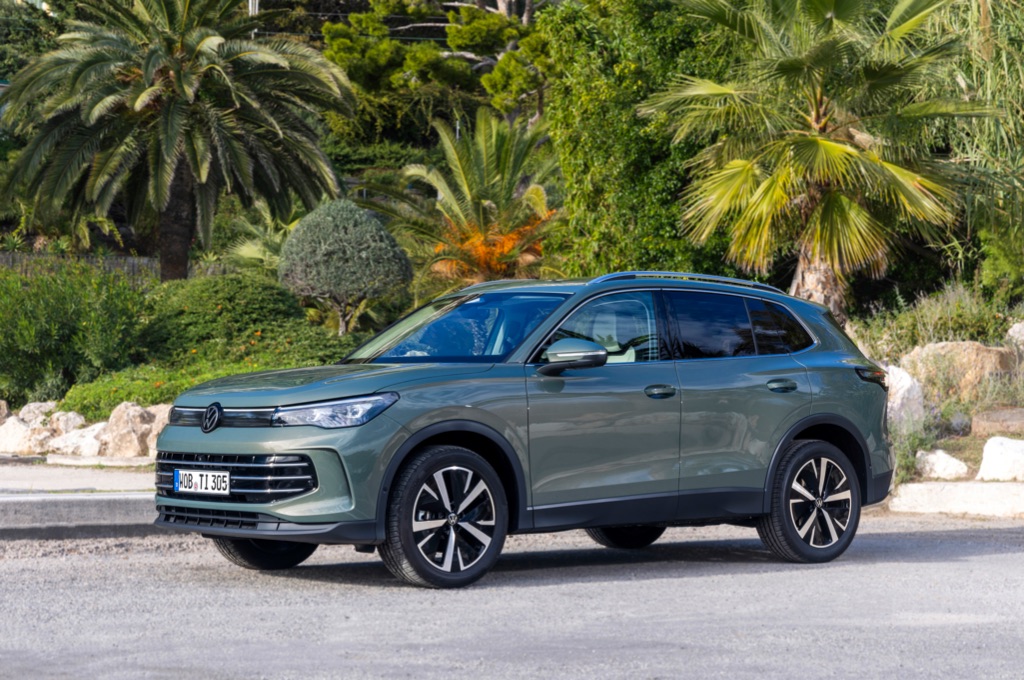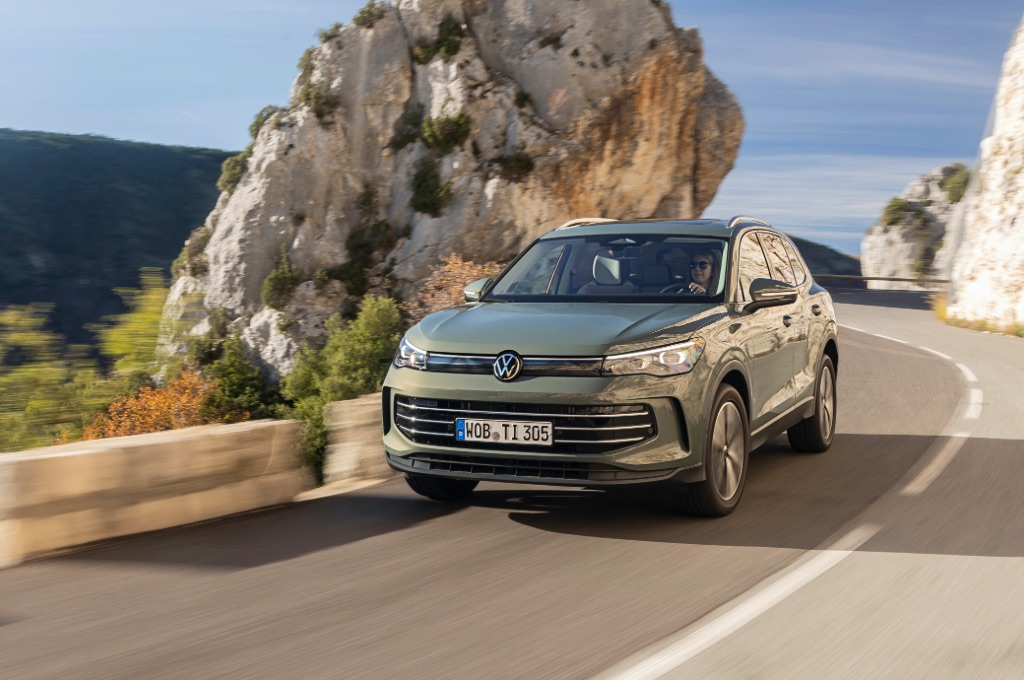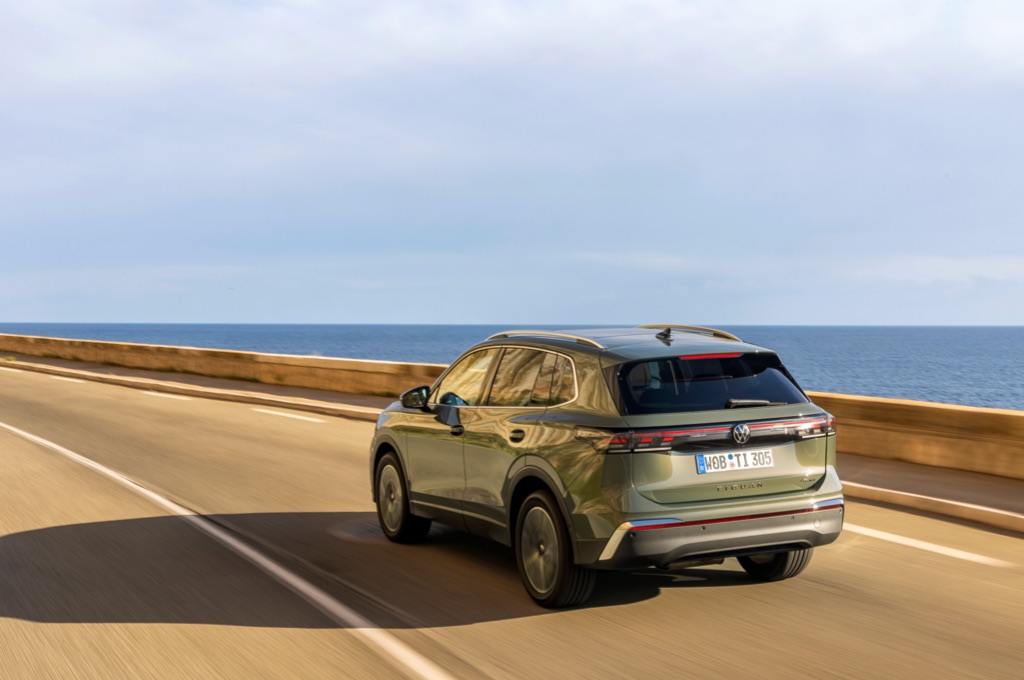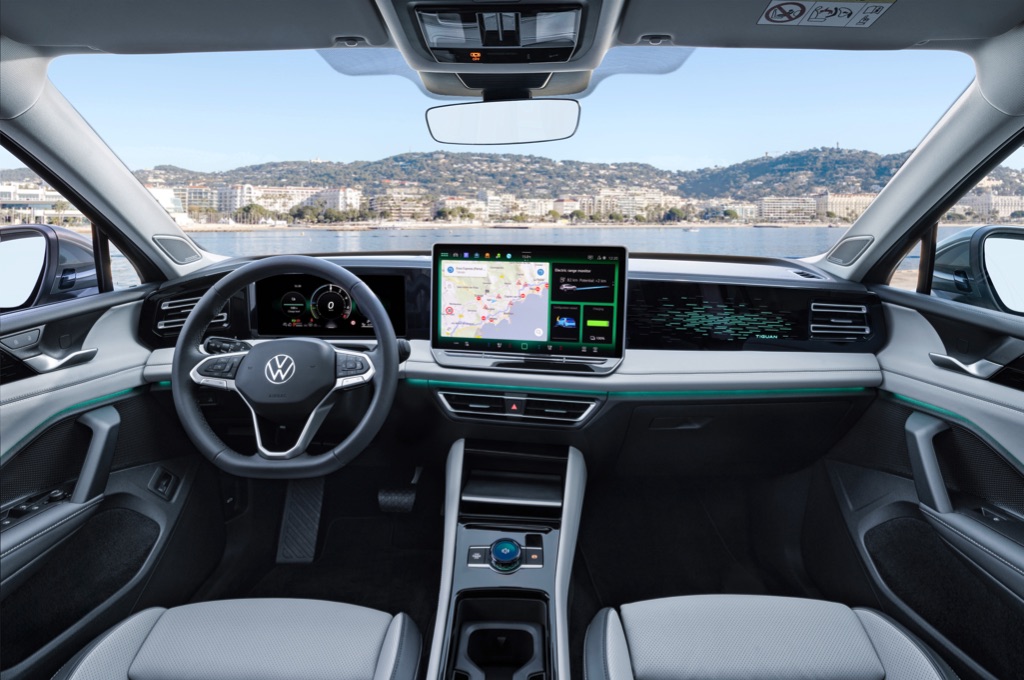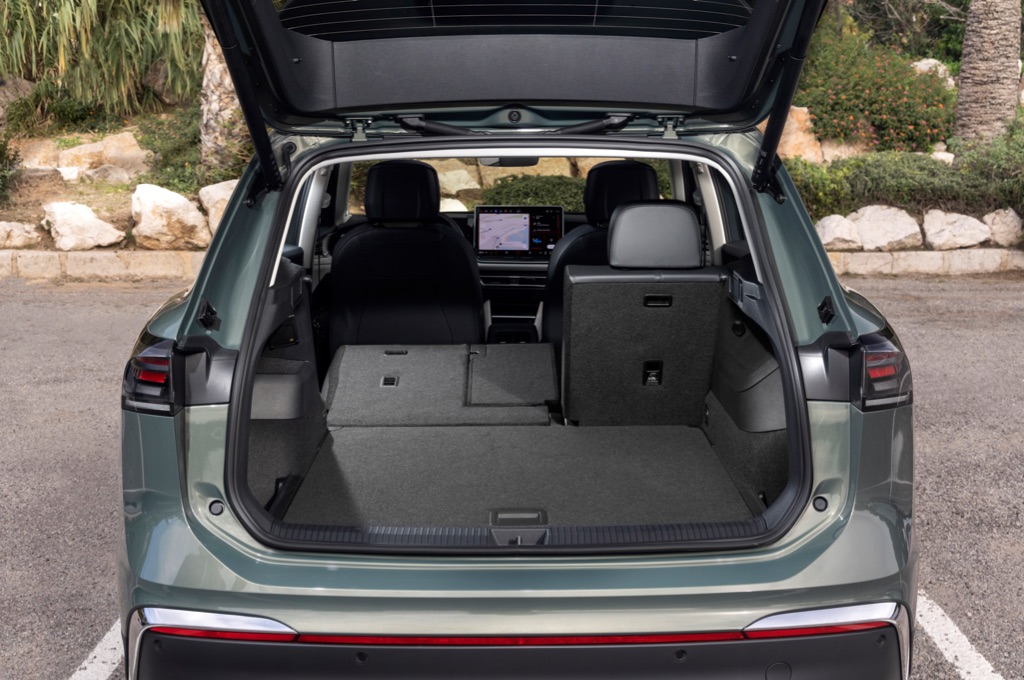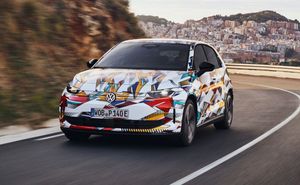Naturally this platform has been built with electrification in mind, though full EV status remains the preserve of VW’s ID-badged models, at least for now. The Tiguan and Passat both arrive with a mixture of petrol, diesel, mild-hybrid and plug-in hybrid powertrains and naturally we’re focussing on the latter here.
Dubbed Tiguan eHybrid, its powertrain is principally the same as the one in its outgoing namesake, just with a much larger battery that allows around 60 miles of fully electric driving. Which, according to VW, ought to cover 99 per cent of passenger car journeys.
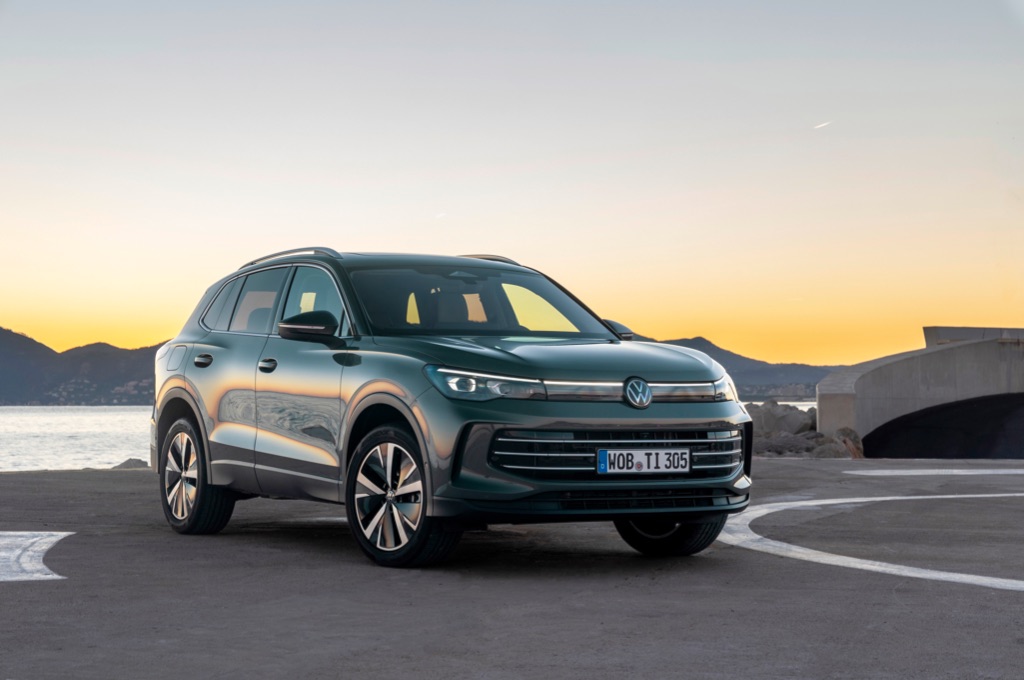
Range, battery & charging
The battery has almost doubled in size, from 10.6 to 19.7kWh, and powers an 85kW/113bhp motor for double its predecessor’s e-range. There are two specs of eHybrid available, but it’s the output of their engine that differs. So two different tunes of 1.5-litre petrol engine yield combined total peaks of either 201 or 268bhp.
Charging speeds have improved, too, the battery accepting up to 11kW from a domestic AC wall box (previously 3.6kW) and up to 50kW at DC stations. Volkswagen hasn’t quoted charging times but expect a full top-up to take 2-3 hours at home or around 30 minutes at a rapid charger.
Charged up to 100 per cent, VW quotes a range of around 62 miles – factor in the size of its fuel tank and that means around 550 miles overall if you fully tap into both power sources.
Practicality & boot space
A core area for a mid-sized SUV to nail. And the Tiguan does very well in its class, though be wary that the eHybrid’s powertrain eats into luggage capacity compared to stock petrol and diesel versions, offering 490 litres compared to their 652 (or 1486 litres versus 1650 with the seats flipped down). Still, practicality is boosted by the option of hands-free boot opening.
The Tiguan has barely grown in the jump to its third generation – a pretty rare phenomenon, and good for ease of parking – and yet VW has still managed to eke out a little more rear headroom. Combine this with already generous legroom and plenty of space for rear passengers to tuck their feet under the front seats (a sticking point with many full EVs) and you have plenty of room for adults in the back, assisted by a rear bench that slides fore and aft and seat backs that recline.
Storage dotted around the car is copious, too; this mk3 Tiguan only offers DSG automatic transmissions, and VW has seized on an opportunity to move the gear selection up to a steering column stalk, freeing up lots of smartphone storage and charging options in the centre console.
While petrol 4WD Tiguans offer 2300kg of towing capacity, the front-driven eHybrids are pegged at 1800kg for the 201bhp car and 2000kg for the pokier 268bhp tune.
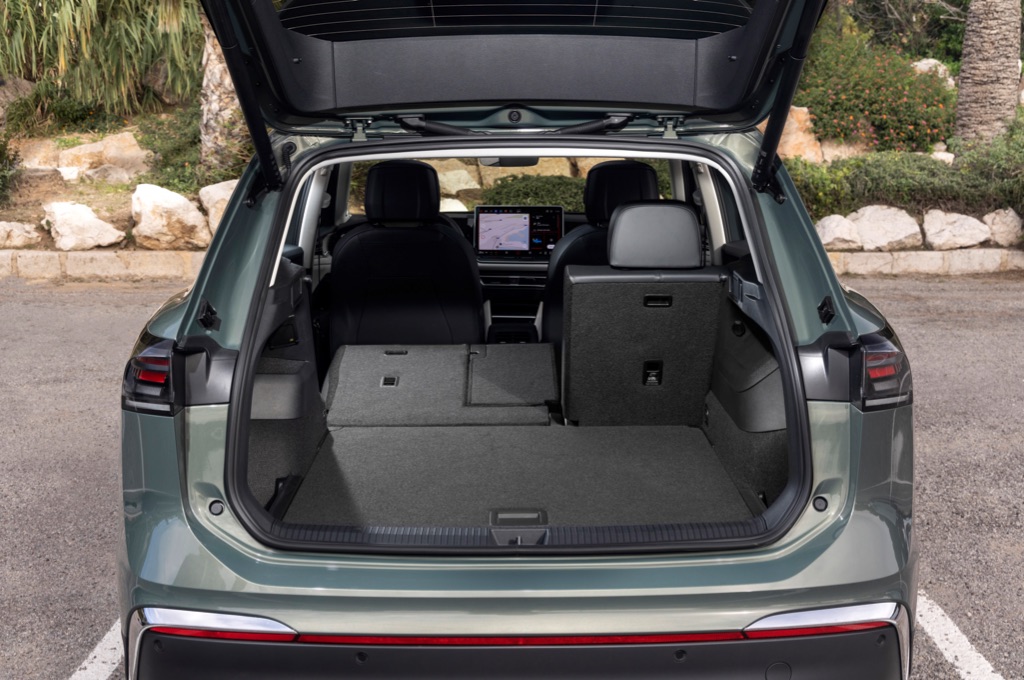
Interior & technology
Volkswagen somewhat threw its reputation to the wind when the Mk8 Golf and its various ID electric models swept almost every control, air con included, inside their touchscreen back in 2020. The Tiguan helps begin the reparation process, though touchscreen operation still rules in here. The display is 12.9 inches as standard with a 15in screen part of an £1100 options pack, and that’s all we’ve tried so far – it falls neatly into your field of vision while ChatGPT-boosted voice commands are designed to alleviate how often you flick your eyes from the screen in the first place.
Burying the adjustment for the eHybrids’ brake regen deep in the menus is an oversight, but otherwise things are simple enough to operate and smartphone link-up is sitting waiting to be utilised. The ChatGPT stuff is still work in progress, and VW says it will grow as AI develops. For now, you can use voice control to operate stuff in the car with relative ease, but more obtuse queries are hit and miss.
The dashboard design is all reasonably clean-cut while quality is decent too; plush materials are used where your eyes and hands most frequently fall, more prosaic and harder-wearing plastics where they don’t. Heated, vented and massaging seats all lie on the options list or within plusher trim levels.
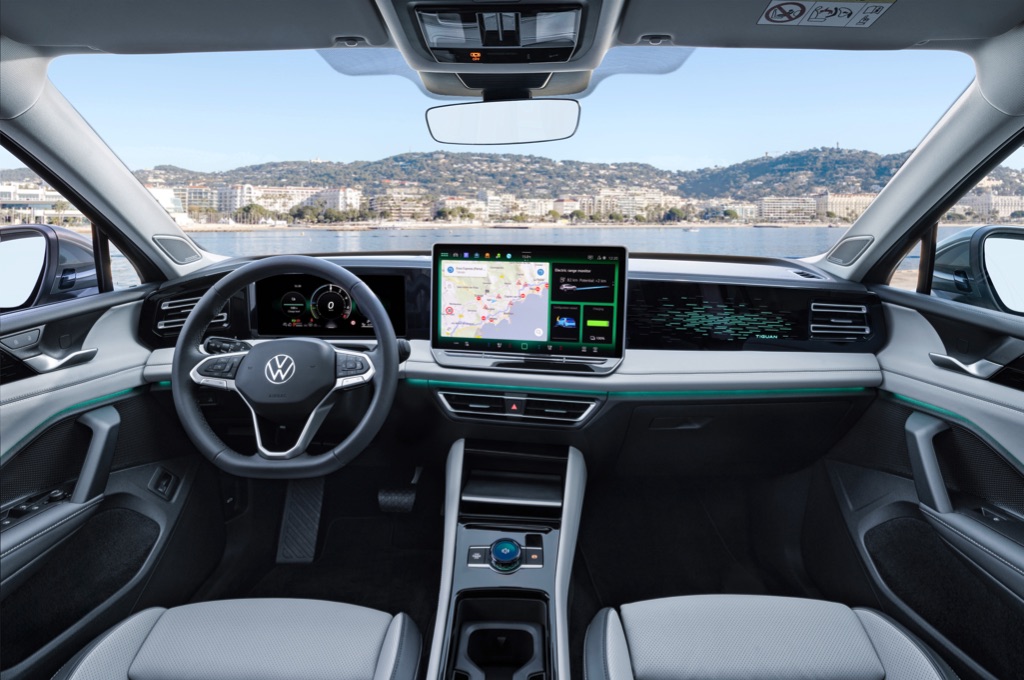
Driving & performance
Both eHybrid variants dish out over 200bhp, but each has nearly 1.9 tonnes to move around. So while on-paper statistics are reasonably strong – the lighter-tuned car completes 0-62mph in 8.2 seconds, its more powerful sibling a second quicker at 7.2secs – the reality is you’ll rarely travel that briskly. Not least because the 1.5-litre engine can begin to sound coarse at higher revs, which actively encourages you to keep your acceleration modest in order to maximise efficiency.
In pure EV mode the car pootles around town nicely, in fact, and you’ll become increasingly keen to see how close you can get to VW’s 62-mile range claim, saving the engine for motorway slip roads or occasional overtakes. We’d like the brake regen to be both stronger and easier to adjust, and each feels like an issue the engineers can fix for the Tiguan’s next update.
The car steers very tidily and has very precise responses and while it stops short of being outright fun, it is among the sharper handling cars in its class, resisting body roll well. But with a penalty when it comes to comfort; the low-speed ride quality, in particular, could be much better. VW has thus far only laid on top spec cars for us to drive on either 19 or 20in alloys – perhaps the base 17s and 18s will mitigate this problem. For now, we have to conclude it’s rather boisterous over low-speed bumps and ruts and recommend you take an urban test drive to make sure you can hack it.
An (optional) adaptive DCC chassis control system allows you to adjust the suspension stiffness within the central drive mode dial. You can adjust lots of parameters, in fact, but we suspect you’ll fiddle with them a couple of times before defaulting to its Comfort mode.
Running costs & pricing
Volkswagen is yet to reveal official CO2 and fuel economy figures for the Tiguan eHybrid. UK sales start with the mild-hybrid 1.5-litre petrol and a 2-litre TDI diesel; once the plug-ins join the online configurator we should know more.
The same applies to overall pricing, though expect the eHybrid to start a little south of £40,000. While standard equipment includes a 12.9in touchscreen with smartphone linkup, all round parking sensors and a reversing camera, goodies like the larger 15in screen, a head-up display, a panoramic sunroof or its smart self-parking system all come tucked within chunky, £1000+ option packs. Show little restraint on the configurator and your Tiguan eHybrid will soar though the 40s.
Verdict
After several slightly underwhelming launches and interior missteps, the Tiguan feels like the beginning of a return to form for VW. It enters a crowded mid-size SUV market offering the brand’s traditional values – a simple, classy interior clothed in a conservative (though very aerodynamic) exterior with a breadth of powertrain options.
The entry-level mild-hybrid option will suit a lot of drivers but most UK buyers are expected to reap the company car benefits of the plug-in eHybrid models. They’ll get a car that, for the most part, will prove satisfying to live with. Just watch out for the fiddly brake regen adjustment and harsh ride – plus a price that’ll soar with options.









